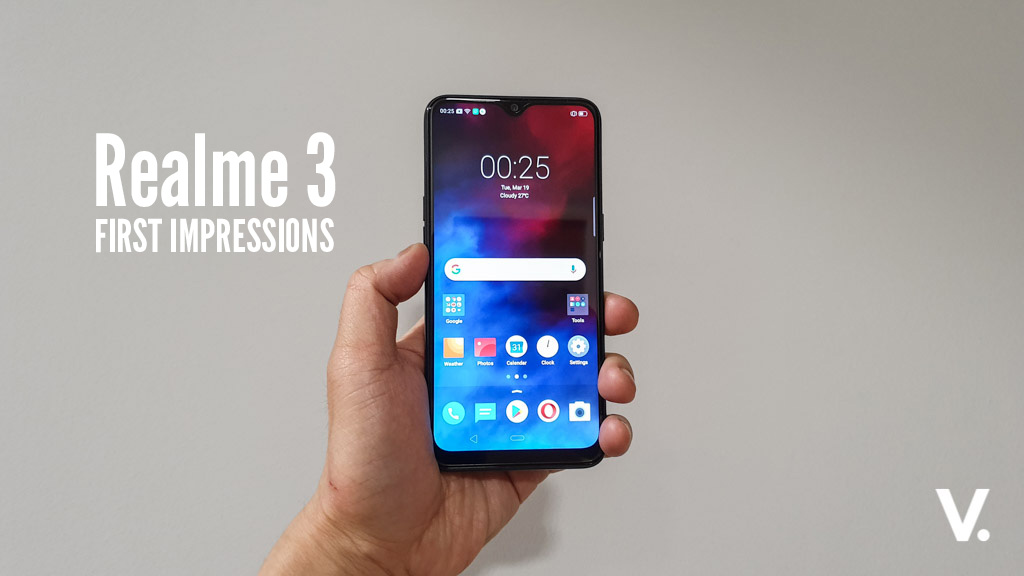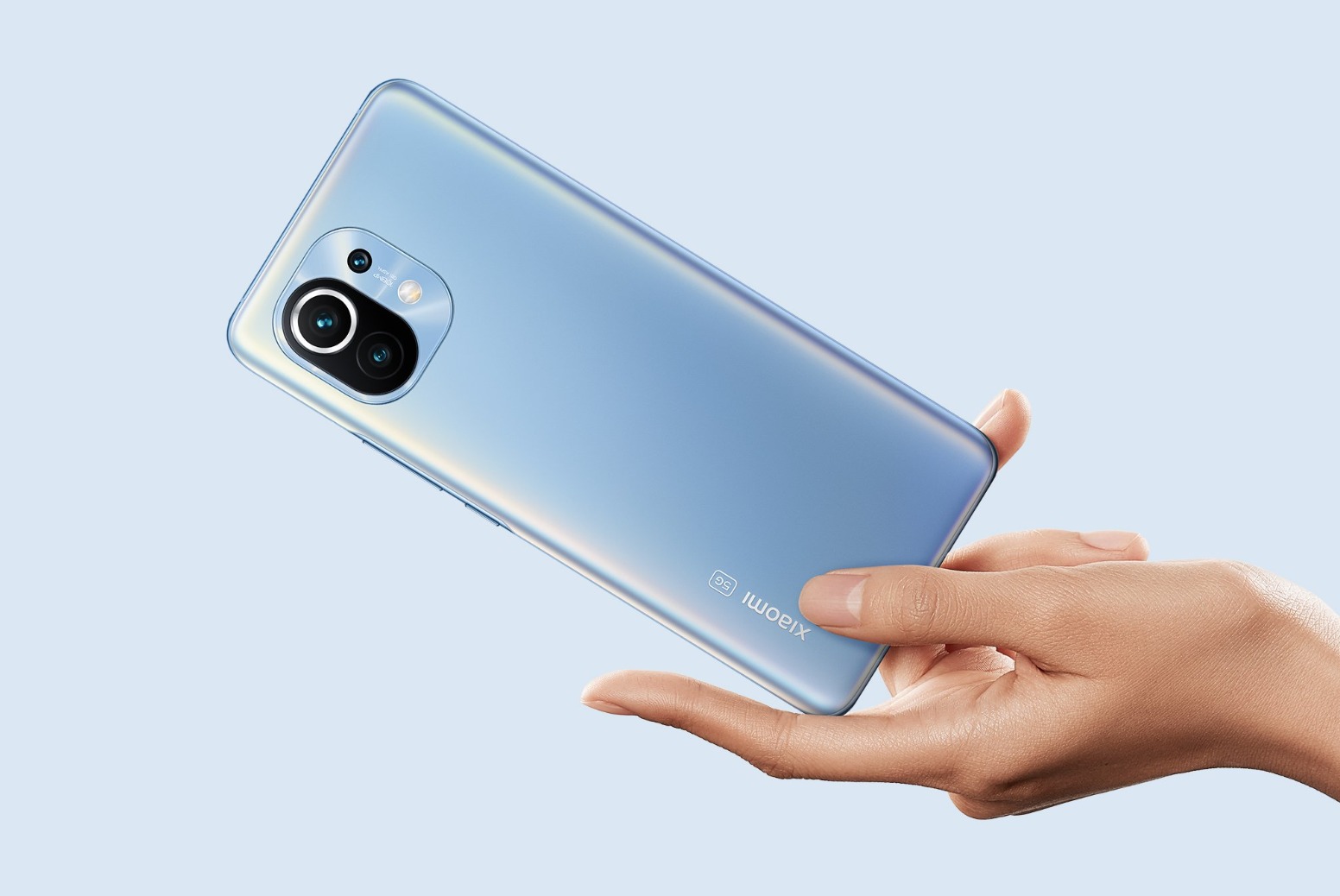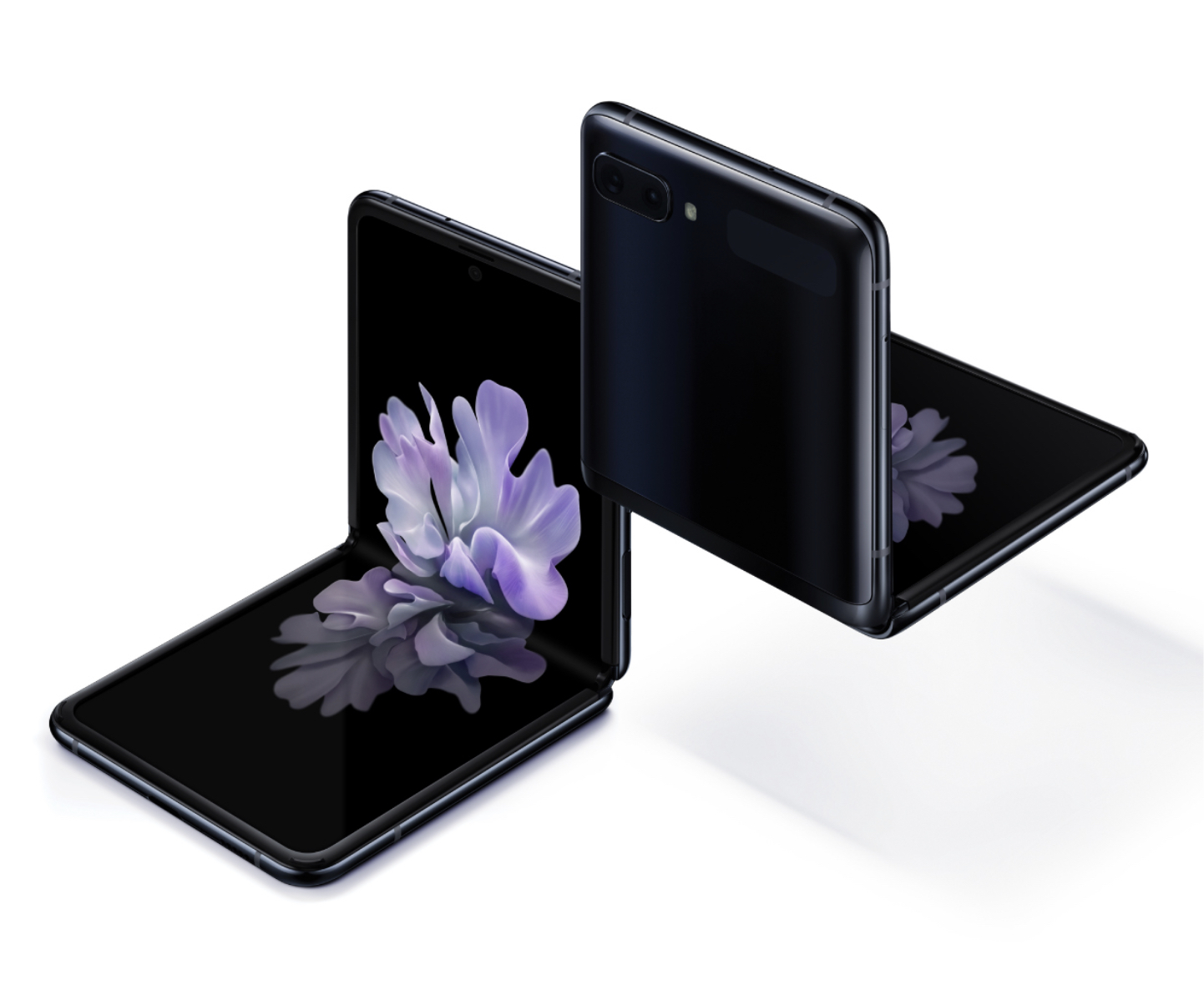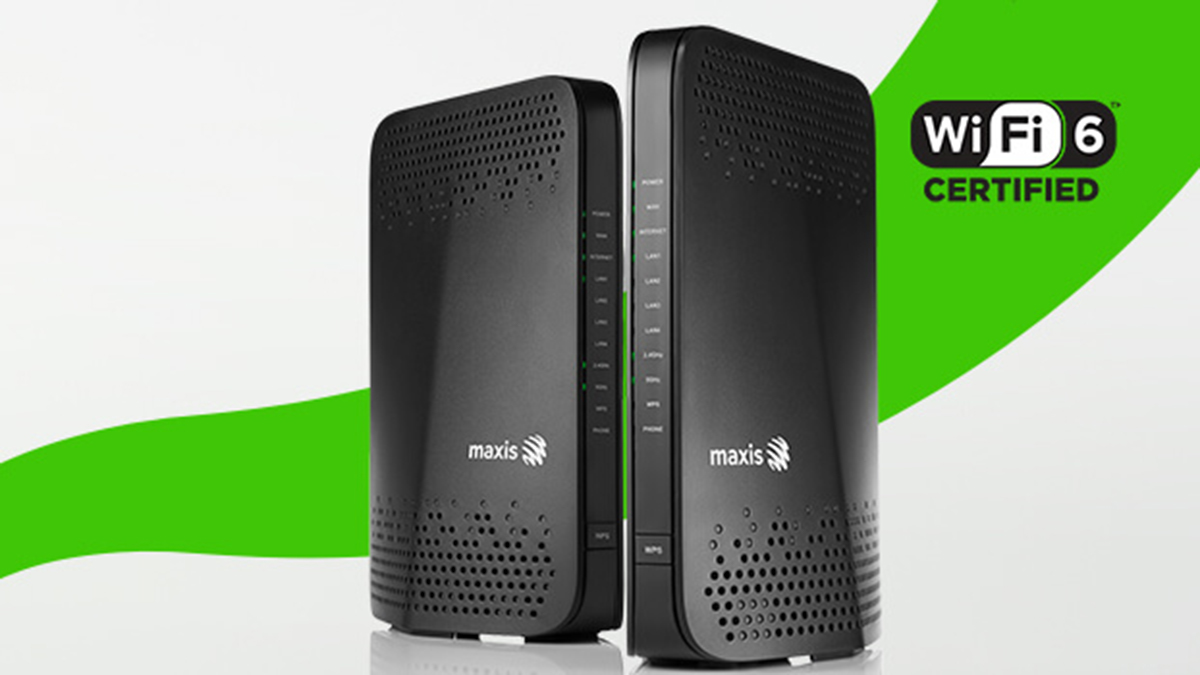Up-and-comer Realme Malaysia recently introduced its latest value-for-money smartphone to young and trendy Malaysians–the realme 3. Realme hopes its latest effort will emulate the success of the realme 2, realme 2 pro and realme C1 which sold over 5 million units worldwide in 2018.
Packed with features and priced from just MYR599, the realme 3 looks to be hard to beat. But what’s it like in the real world? Thanks to Realme Malaysia, I had an early unit (4GB + 64GB storage) to play with, so here’s a mini review of sorts.
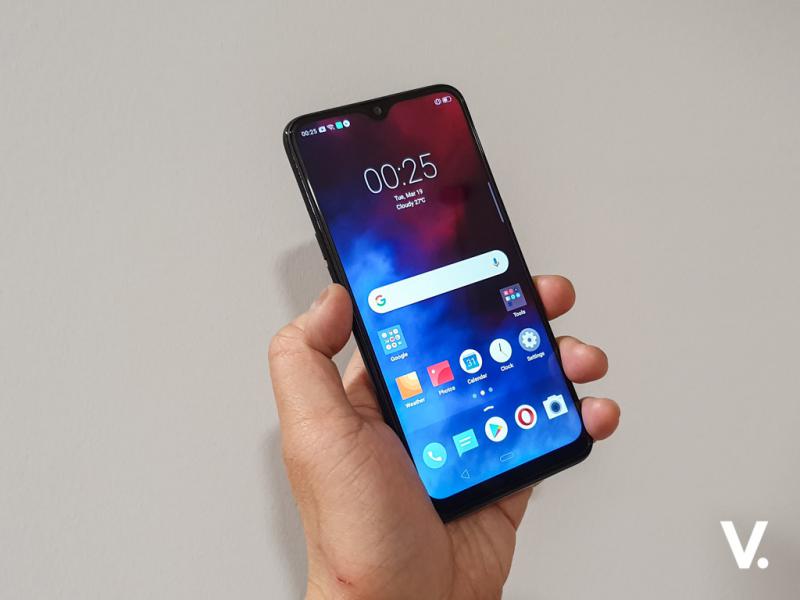
You may notice a subtle change with realme’s branding–the logotype has undergone some enhancements and there’s also a logo now (at least on the box). Brand colours have switched from white/red to yellow/grey. There’s still inconsistency with how the product name is spelled out. Is it Realme 3 or realme 3? Is it realme or Realme? To be fair, brands like vivo, OPPO and HONOR have the same issues. Let’s hope their respective branding agencies can sort this out.
Nitpicky branding gripes aside, I think the yellow/grey corporate colour works well.
Moving on.
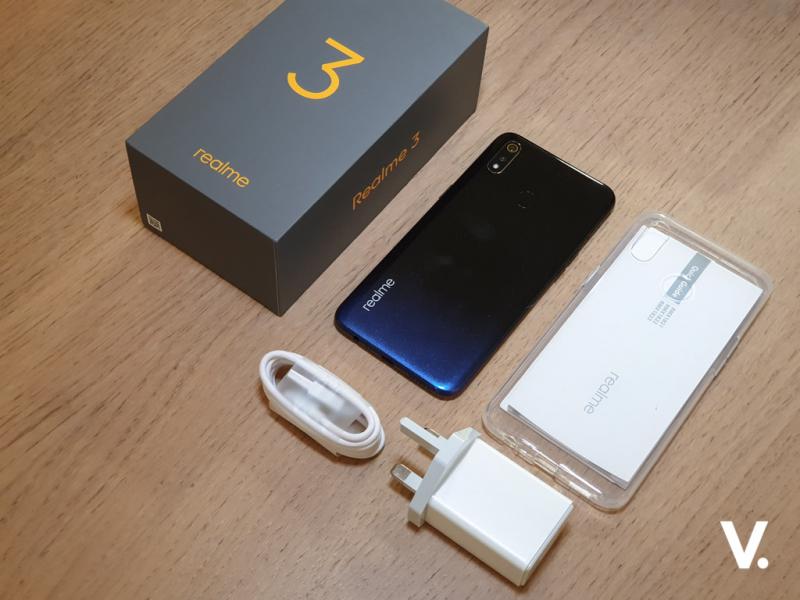
In the box
- 5V/2A charger
- USB Type-A to micro-USB cable
- Silicone protective case
- SIM ejector tool
- Documentation
Hardware
First, a brief rundown of the specs. The phone comes in two memory configurations: 3GB RAM + 32GB storage and 4GB RAM + 64GB of storage. I don’t know about you, but I’d shell out MYR100 more for more memory and storage, which will presumably, give me smoother, better performance.
Both variants are identical otherwise, sporting a 6.2-inch HD+ (720×1520) DewDrop Display that delivers a commendable 88.3 percent screen-to-body ratio.

Under the hood, the phone is powered by MediaTek silicon–the 12nm octa-core Helio P60 chipset. Storage is expandable via microSD and thankfully, this dual-SIM (with 4G VoLTE) device boasts a triple card slot.
You can expect some livewire performance thanks to the device’s massive 4,230mAh battery. Expectedly, it charges via micro-USB.
At the bottom of the device, you’ll find a single speaker as well as a 3.5mm headphone jack.
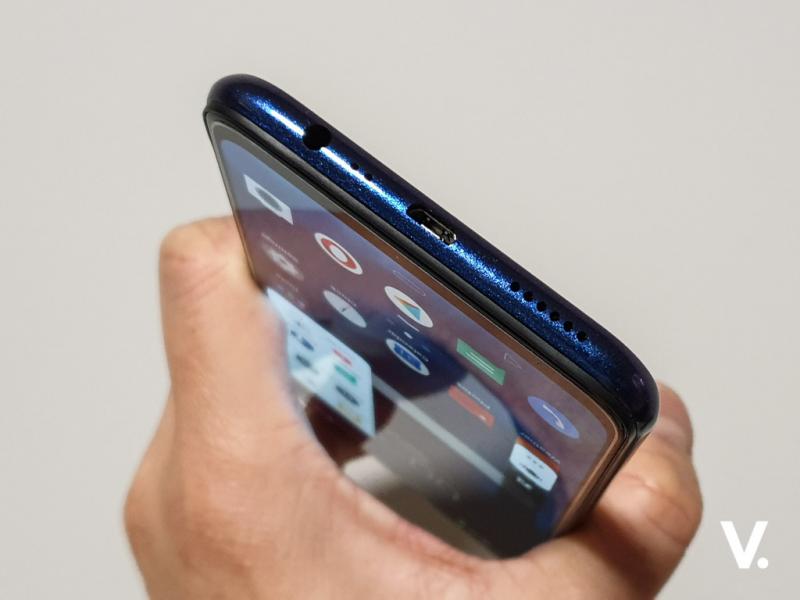
There’s also a fingerprint sensor mounted at the back.
Design-wise, it’s pleasing if familiar, featuring a gradient unibody offered in Dynamic Black (black/blue), Radiant Blue (blue/purple) and Classic Black colourways. Build can be described as good at this price point.
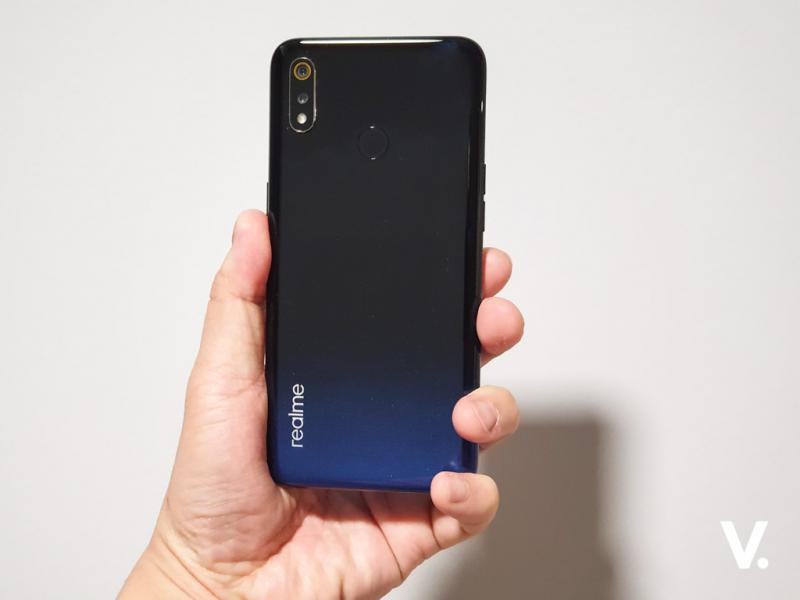
Over on the optics side of things, the realme 3 sports a dual-camera setup arranged in a vertical array that consists of a 13MP f/1.8 + 2MP sensors with AI Scene Recognition, AI Chroma Boost mode and support for Nightscape mode (night mode).
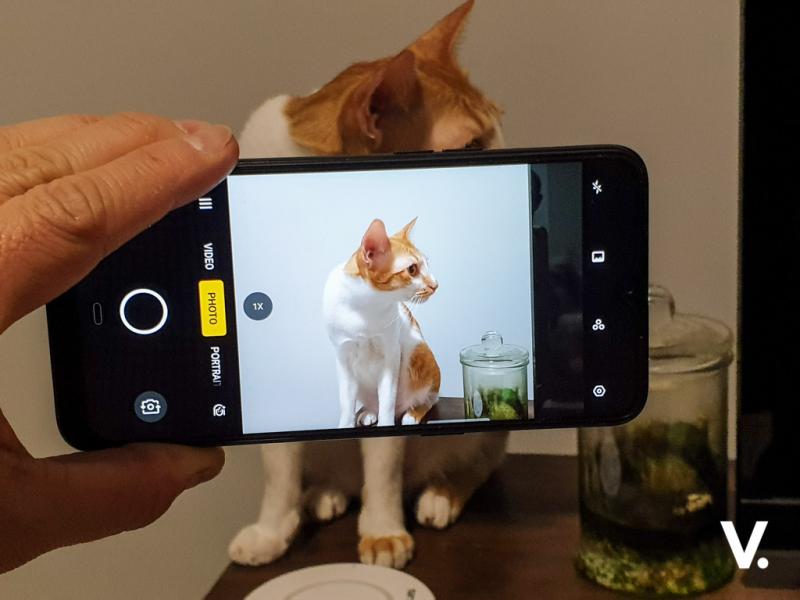
On the opposite side is a 13MP selfie shooter.
It runs ColorOS 6.0 based on Android Pie, so it should look and feel familiar for you out there using OPPO devices. This also means smooth performance, and according to realme, the device comes with Google Lens and Camera2 API access, as well as an unlocked bootloader.
First impressions
As far as first impressions go, the realme 3 is a neat package. Considering how much this device costs, you’ll find everything you need in a smartphone–whether as a second device or your first starter smartphone. Personally, I’d spend a little bit more money and pick up the “Pro” version when it is available, just as I would pick the realme 2 Pro over the realme 2, for obvious reasons.
As far as performance goes, the realme 3 will range from adequate to better than most in its class. The display isn’t the sharpest and brightest there is, but it’s big–so it’s great for reading, watching videos or playing games.
Talking about games, the realme 3 will play plenty of the latest games without complaint. This includes intensive 3D games like Asphalt 9 or third person shooters like Tacticool. You will notice occasional drop frames and you will need to dial down graphics to Medium quality, but otherwise generally playable.
Battery life is as you’d expect, excellent, seeing that the device is juiced by a substantial battery cell. This is aided by a lower resolution screen and a considerably power efficient processor.
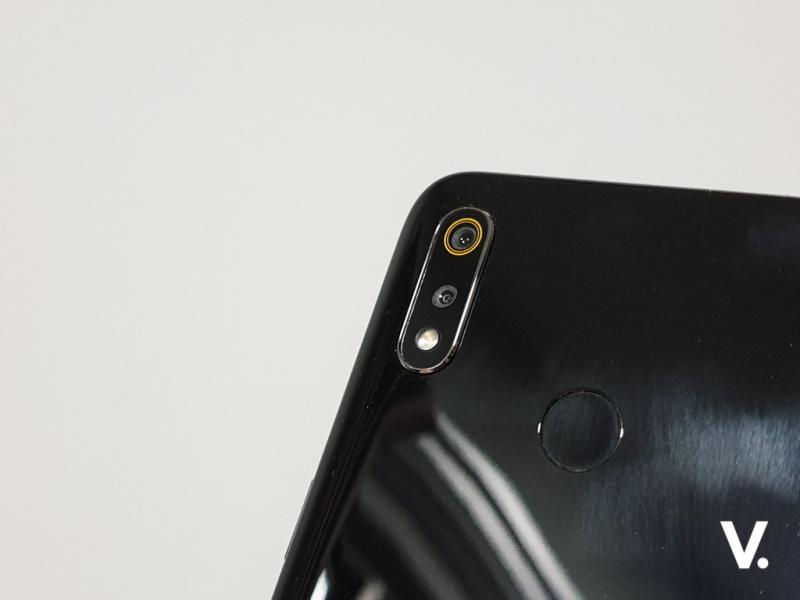
In terms of camera performance, the realme 3 generally performs as you’d expect–reasonably sharp with good colour reproduction in sufficient light. The camera software tends to over-sharpen images in general and low light images can be soft.
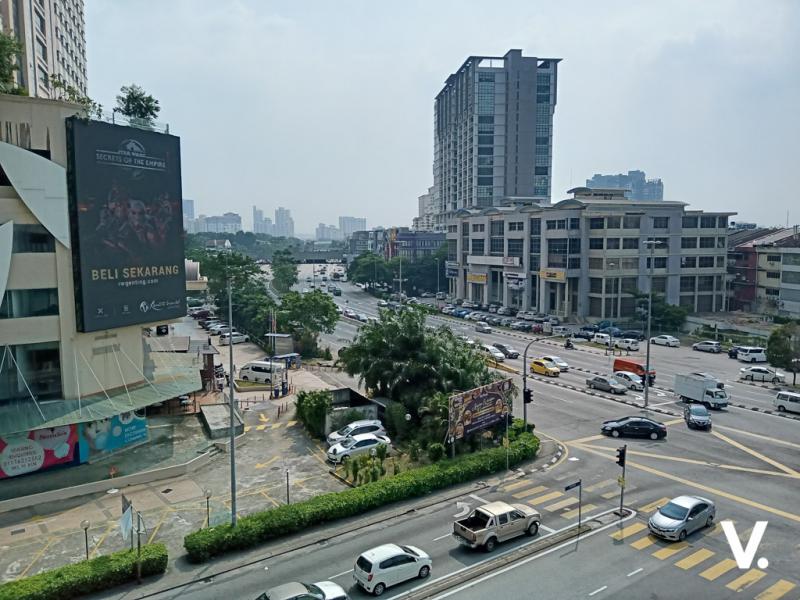
I commend realme for offering AI Scene Recognition and Nightscape mode though, for this price point. For the most part, AI Scene Recognition works, at least to the limits of the hardware.

Nightscape works reasonably well too, but of course don’t expect Huawei Mate 20 Pro-level quality.

Audio quality is as good as a down-firing single speaker can be–pushes out decibels but lacking dynamic range and clarity.
I don’t have complaints about its looks and I think it feels good in the hand.
A crowded market
The realme 3 has its work cut of for it. Competition is rife and it will cross paths with the Redmi Note 7, honor 8C, Samsung Galaxy A20/A30/M20 and slightly older models like the ASUS ZenFone Max M2.
If you’re not into the status quo, the realme 3 is a viable alternative otherwise.
Pricing and availability
The realme 3 is available in two configurations: 3GB RAM + 32GB storage, and 4GB RAM + 64GB storage priced at MYR599 and MYR699 respectively.
The device is available for purchase across realme’s nationwide network of 1,000 dealers.
Stay tuned for the full review.


